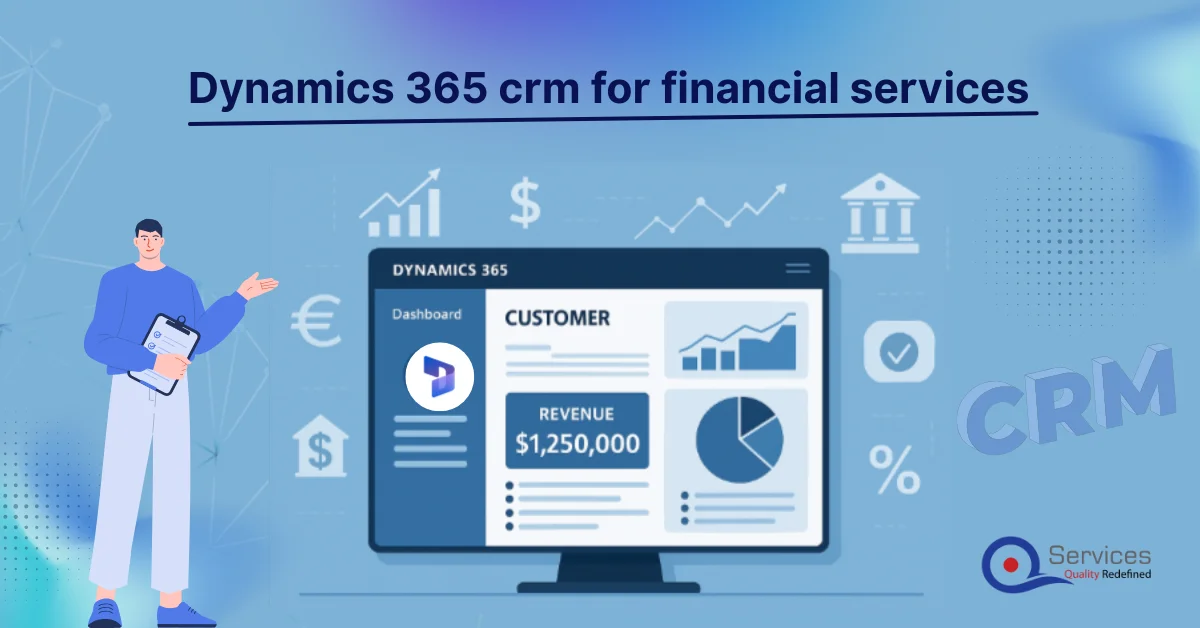
Home » A Beginner’s Guide to Creating Custom AI Models with AI Builder

Why are custom AI models so important for your business? These models enable better decision-making, automate processes, and provide deeper insights into your business data. In fact, A report says that businesses using AI report a 40% increase in productivity and a 30% reduction in operational costs.
We will talk about Microsoft AI Builder in this article, which is a useful tool for creating AI models for companies. To assist you with getting started with AI Builder, we will give you a guide that will demonstrate how to create customized AI solutions.
Ms AI Builder is a tool within Microsoft Power Platform that allows users to create, train, and deploy custom AI models without having much coding skills. It’s basically designed to make AI accessible to everyone, from business professionals to developers.

AI Builder works seamlessly with other Microsoft tools like Power Apps, Power Automate, and Dataverse. For example, you can create your own AI model in AI Builder to predict sales trends, then use Power Apps to build an app that displays these predictions to your sales team or set up a Power Automate flow to automatically send alerts based on the predictions.

Business workers without technical experience can utilize AI Builder because of its easy-to-use interface, which requires little coding skills. For example, without having to write complicated code, a marketing manager can utilize AI Builder to build a model that forecasts client attrition.
AI Builder easily connects with Dataverse, Power Automate, and Power Apps, among other Microsoft technologies. Users can directly integrate AI insights into their workflows thanks to this connection. For example, a sales team can receive AI-generated sales forecasts using a Power App, and Power Automate can use these forecasts to automatically send follow-up emails.
AI Builder offers prebuilt templates for common AI scenarios such as text recognition, object detection, and sentiment analysis. Allowing users to quickly deploy AI solutions. Additionally, users can create custom models tailored to their specific business needs. For example, a retail business can develop a custom model to analyse customer feedback and identify trends in product satisfaction.
Get free Consultation and let us know your project idea to turn into an amazing digital product.
You must first access Microsoft AI Builder with Microsoft Power Apps in order to begin using it. Here is a step-by-step guide to get you going:
When you first enter AI Builder, you’ll notice an interface designed to make AI model development accessible. Here’s a quick overview of the core components:
Before getting into building your custom AI models, the most important thing you must do is to set up your environment correctly. Here’s what you’ll need:
Microsoft Account:
Make sure you have a Microsoft account. This account will give you access to all Microsoft services, including Power Apps and AI Builder.
Some features of AI Builder require specific licenses. For that, you need to ensure that you have the correct Microsoft Power Platform license.
Prepare your data sources in advance. AI Builder can connect to different data sources, such as Microsoft Dataverse, SharePoint, and SQL databases. Make sure your data is clean and well-organized to achieve the best results when building your AI models.
You need to have the necessary permissions to access and use the data sources and tools within your organization. This might involve working with your IT department to ensure you have the appropriate access rights.
While AI Builder is user-friendly, having a basic understanding of AI concepts like machine learning, data training, and model evaluation can be very helpful.
To build your own AI model involves several key steps. Let’s break it down into simpler terms:
First, and most crucial step is to identify the problem you want to address as it helps you decide that whether you need a model for text analysis, image recognition, or structured data processing.
After choosing the right type of model, next step of yours should be to gather the data you need. This data can come from databases, spreadsheets, or online sources. Clean and organize your data to ensure it’s in the right format. High-quality data is crucial for building effective AI models, so make sure your data is accurate, complete, and relevant.
After following the above two steps now its the time to build and train your model using AI Builder:
After training, it’s eaually essential to test and validate your model:
The last and one of the most crucial steps is deployment, deploy and integrate your model into applications:
Building AI models can be a complex process, and often have so many challenges. Understanding these challenges and troubleshooting them can surely enhance your model’s performance. Here are some issues that you might face while building AI models along with solutions.
Poor quality data can lead to inaccurate model and in order to address this, it’s essential to clean the data by removing duplicates, and correcting errors. Standardizing data through normalization ensures consistency, while feature engineering helps create meaningful features that improve model performance.
Not having enough data can make it hard to train your model.
To overcome this, you can create more data using techniques like oversampling, under sampling, or making synthetic data. Another way is to use pre-trained models and adjust them with your own data.
The model works well on training data but fails on new data.
To avoid this, you can use cross-validation to make sure your model works well on new data. Apply regularization techniques to keep your model from being too complex. Simplify your model by removing unnecessary parts.
Underfitting happens when a model is tool simple to capture the underlying patterns in the data, resulting in poor performance. To address this, make your model more complex by using better algorithms or adding more features. Improve your dataset with more relevant features and tweak the settings to get better performance.
Training AI models can be time-consuming, especially with large datasets and complex models. To reduce training times, make your code more efficient and use parallel processing. Use GPUs to speed up the process. Train your model in smaller batches to save memory and speed things up.
It’s hard to understand how the model makes decisions, especially in fields where transparency is important. Use explainable AI techniques to make the model’s decisions clearer. Sometimes, simpler models like decision trees are easier to understand. Use tools like SHAP or LIME to see which features are important and how the model makes predictions.
Problems come up when putting the model into production.
Solution: Use tools like Docker or Kubernetes to make sure your deployment environment is consistent. Set up CI/CD pipelines to automate testing and deployment. Monitor your model to catch and fix issues early.
AI models can show bias or unethical behavior, which can be serious. Regularly check and fix bias in your data and models. Use fairness metrics to ensure ethical behavior. Follow ethical guidelines and best practices to build responsible AI systems.

We’ve explored how to use AI Builder to create your own AI models, making the technology for everyone even for those who have less technical skills. As you consider how to leverage AI in your organization, we encourage you to experiment with AI Builder. Don’t hesitate and take the initiative to learn how to build your own AI model tailored to your unique business needs.

Our Articles are a precise collection of research and work done throughout our projects as well as our expert Foresight for the upcoming Changes in the IT Industry. We are a premier software and mobile application development firm, catering specifically to small and medium-sized businesses (SMBs). As a Microsoft Certified company, we offer a suite of services encompassing Software and Mobile Application Development, Microsoft Azure, Dynamics 365 CRM, and Microsoft PowerAutomate. Our team, comprising 90 skilled professionals, is dedicated to driving digital and app innovation, ensuring our clients receive top-tier, tailor-made solutions that align with their unique business needs.

Hyperautomation and Generative AI are now two of the most talked-about topics in banking automation. Banks are increasingly adopting these technologies to enable seamless, end-to-end operations across financial services.

Dynamics 365 CRM for Financial Services is a specialized version of Microsoft Dynamics 365 Customer Relationship Management (CRM) tailored specifically for the financial services industry. It is designed to help financial institutions, such as banks, insurance companies, investment firms, and wealth management organizations, manage their customer relationships, streamline operations, and enhance service delivery.

Companies are catching on to the fact that they need cool tech like Dynamics 365 CRM and ReactJS if they want to keep things running smooth and make smarter choices.
AI Builder is a feature that lets you create, train, and deploy AI models without needing to know a lot of coding. It works with Power Apps and Power Automate to add AI capabilities to your business applications.
You can build various models like document processing, category classification, entity extraction, prediction, and object detection. AI Builder also supports custom models tailored to your specific business needs.
No! AI Builder is designed to be user-friendly and doesn’t require extensive coding skills. It guides you through the process of building and deploying AI models.
To get started, sign in to Power Apps or Power Automate, go to the AI Builder section, and choose the type of model you want to create. Then, just follow the step-by-step instructions to import your data, train the model, and deploy it.
The data you need depends on the type of model you’re building. For example, document processing models need document samples, while prediction models require historical data. Make sure your data is clean and well-organized for the best results.
Yes, AI Builder has pre-built models ready for common business scenarios. You can also use transfer learning to fine-tune these models with your specific data.
Once your model is trained and deployed, you can easily integrate it with Power Apps to create smart applications or with Power Automate to automate workflows. AI Builder provides connectors and tools to make this integration smooth.
AI Builder requires a license, and the cost depends on the plan and usage. It’s best to check the latest pricing details on the Microsoft Power Platform website.
Use AI Builder’s optimization tools to fine-tune your model. Regularly update your data, retrain the model as needed, and monitor its performance to keep it accurate and efficient.
Common challenges include data quality issues, not enough data, overfitting, and deployment problems. Solutions involve cleaning your data, generating more data, using cross-validation, and deploying with tools like Docker.

Founder and CEO

Chief Sales Officer
